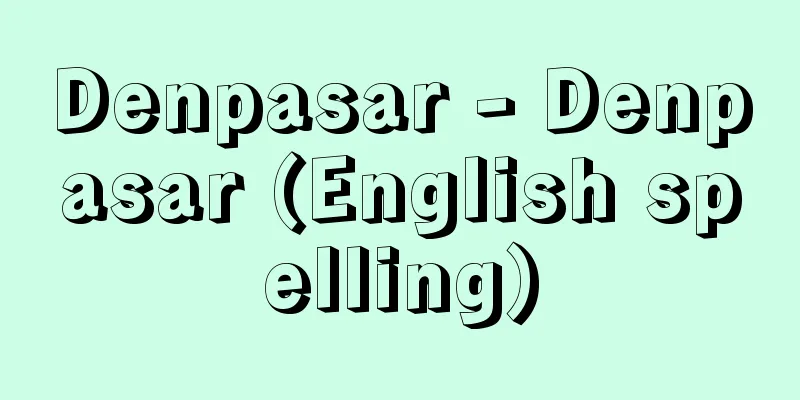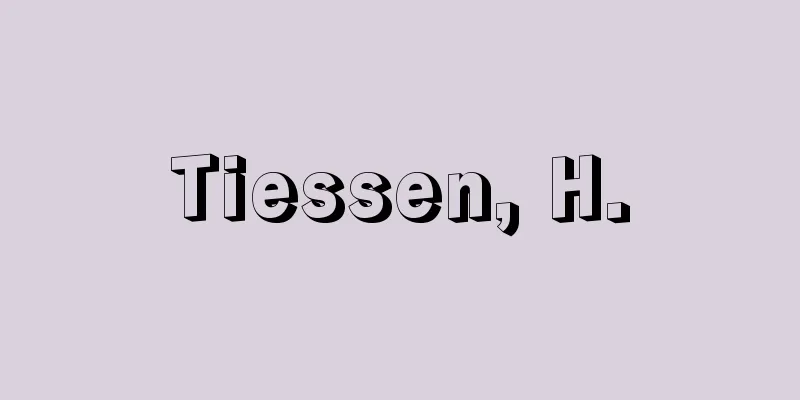Collective behavior

|
Collective behavior refers to a wide range of social phenomena in which people act collectively in society, from panic, lynching, riots, epidemics, and rumors to social movements. Collective behavior researchers have been interested in these diverse social phenomena as non-institutional behaviors that transform society, and have attempted to elucidate the mechanisms by which these heterogeneous, yet homogeneous, behaviors occur within groups, and to identify the social conditions under which they occur. Their theoretical perspectives are diverse, but the collective behaviors they focus on have also changed along with their interests. It is no exaggeration to say that in the first half of the 20th century, they were interested in urban pathologies such as panic, lynching, and urban riots, and in the second half of the 20th century, they were interested in social movements. Here, we will compare and introduce representative theories from among the various approaches to collective behavior. 1. Social contagion theory The origins of collective behavior theory can be traced back to Le Bon, G.'s "The Mind of the Crowd" (1895). Having witnessed the crowd behavior that was the driving force behind citizen movements such as the Paris Commune, Le Bon described crowd behavior using concepts such as heredity, the unconscious, and suggestibility, which were cutting-edge concepts at the time. It was a sociologist at the University of Chicago, who was at the forefront of urbanization, who first positioned collective behavior theory as a research subject. Compared to Le Bon, who was critical of crowd behavior, early Chicago School researchers such as Park, RE and Blumer, HG, actively positioned collective behavior as social behavior that transforms a fixed social order and establishes a new social order. Although the explanatory principles for primitive collective behaviors such as panic and lynching differed in sophistication, they were the same in that they viewed emotions as being shared through social contagion. The social contagion theory states that under normal social order, we engage in interpretive interactions in which we interpret the meanings implied by the words and actions of others and respond according to those interpretations. There is a wide range of interpretations, which can result in a variety of behaviors. However, when existing values and norms are shaken and social anxiety is fostered, this is replaced by a circular reaction based on mutual reference. In other words, we refer to the behavior of others to determine our own situation and the actions we should take, but because there is actually mutual reference, certain behaviors are easily reinforced and converged. In the process, collective excitement increases, suggestibility increases, and emotions are shared. This series of processes is called social contagion. 2.Emergent norm theory In social psychology experiments, it was found that increasing the anonymity of participants tended to promote aggressive behavior, and this was noted as deindividuation. However, it was later discovered that, even under the same anonymity conditions, the electric shock administered by participants was weaker when they were wearing nurse costumes than when they were wearing racist clothing. In other words, anonymity does not immediately increase antisocial behavior, but can be interpreted as strengthening the tendency to follow role norms. Emergent norm theory attempts to explain collective behavior from this norm rather than a change in human nature. Turner, R. and Killian, L., referring to Sherif, M.'s conformity experiments using the phenomenon of automatic movements, argued that the reason why collective behavior that is different from everyday life and yet homogeneous within a group is observed is because norms that are different from the usual emerge on the spot and are followed. Such situation-dependent norms are called emergent norms. He believed that the principle of human behavior is conformity to norms, whether it is institutional or non-institutional, i.e. collective behavior, and that the quality of behavior differs only because the norms are different. The emergent norm theory remains a core theory in collective behavior theory, and has been further developed by D.A. Snow. 3. Value-added theory Smelser, N. tackled another question in collective behavior theory, that is, why a certain collective behavior occurs in a certain society at a certain time. This is because collective behavior does not occur anywhere at any time, but tends to be concentrated in certain societies and at certain times. Smelser argued that the groundwork for collective behavior is laid when there is conflict in society (he calls it structural strain), beliefs (generalized beliefs) that explain the cause of the conflict and point to the actions that should be taken are shared, and the culture and social institutions allow that behavior (structural inducement). He argued that collective behavior actually occurs when some kind of triggering event (trigger factor) occurs, leaders and organizations have the power to involve many people (mobilization), and social control power (control factor) is weak. He argued that collective behavior will actually occur and the possible forms it can take will be narrowed down as the above six factors accumulate. Smelser's idea is known as the value addition theory, as it is like the way iron ore becomes more added value during the steelmaking process and becomes specialized into specific products. 4. Resource mobilization theory Smelser's value-added theory is the most comprehensive theory in collective action theory, but it was later thoroughly criticized by resource mobilization theorists. One of the criticisms was that it assumed that people with conflicts and dissatisfaction would simply participate in collective action as an outlet for their frustrations. Resource mobilization theory is based on Olson, M.'s utilitarian image of human beings, and claims that people are reluctant to participate in collective action even if they are dissatisfied with the current situation or there is a benefit to be gained from action. On the contrary, there are people who participate in social movements even though they do not directly benefit from their results. They called these people conscientious members. Rather, they analyzed the economic, political, and organizational conditions that lead people to take action. They have produced a set of variables and propositions that are valid for collective action as a whole, such as finding conscientious members, the degree of disposable income and free time, electoral systems, and utilizing existing groups. In recent years, however, a need has arisen within resource mobilization theory to link these social structural variables with the activities of individuals. This is because it has become impossible to ignore individual factors such as beliefs or ideology. Even if social conditions that encourage participation are in place, it is difficult to imagine that people will join a social movement whose purpose is to engage in activities that go against their beliefs. This is why social psychological variables have been reinstated in collective action theory, which once shifted its main research focus to the field of political sociology. 5. 21st Century Collective Behavior Theory Collective behavior theory targets a wide variety of collective phenomena, but the social phenomena it targets vary from era to era, and the theoretical framework has changed accordingly. When considering 21st century collective behavior theory, the theoretical framework will depend on what collective phenomena are of interest. In this case, the progress of information technology cannot be ignored. As seen in democratization movements, the arena is often prepared by information via the Internet before sharing physical space and taking action. More in-depth discussion is needed from the perspective of new information media and information behavior patterns on rumors, urban legends, or more institutional processes for forming public opinion, policy evaluation, and consensus building. [Jun Tanaka] Latest Sources Psychology Encyclopedia Latest Psychology Encyclopedia About Information |
|
集合行動とは,パニック,リンチ,暴動,流行,流言から社会運動まで人間が社会において集合して行動する幅広い社会現象を指す。集合行動論の研究者たちは,これらの多様な社会現象に,社会を変革していく非制度的な行動として関心を寄せ,その異質な,しかし集団内では同質的な行動が発生するメカニズムの解明と,発生する社会条件の特定に挑んできた。その理論的視座は多様であるが,その関心とともに対象となる集合行動もまた変化していった。20世紀前半はパニックやリンチ,都市暴動といった都市病理に,そして20世紀後半は社会運動に関心を寄せていたといっても過言ではないだろう。ここでは,集合行動への多様なアプローチの中から代表的な理論を比較,紹介する。 1.社会的感染説social contagion theory 集合行動論の源流は,ル・ボンLe Bon,G.の『群集心理』(1895)にさかのぼることができる。パリ・コミューンなどの市民運動を担う群集行動crowd behaviorを眼前にしたル・ボンは,当時の先端的な概念であった遺伝や無意識,被暗示性といった概念を用いて,群集行動を記述した。集合行動論を初めて研究対象として位置づけたのは,都市化の最前線にいたシカゴ大学の社会学者であった。群集行動に批判的だったル・ボンと比べて,パークPark,R.E.やブルーマBlumer,H.G.らのシカゴ学派初期の研究者たちは,固定した社会秩序を変革し,新たな社会秩序を打ち立てる社会行動として集合行動を積極的に位置づけた。パニックpanicやリンチlynchといった原初的な集合行動に対する説明原理は,精緻さに差はあるものの,社会的感染によって情動を共有するようになると見ることでは同じであった。社会的感染説は,通常の社会秩序のもとでは,われわれは他者の言動が含意する意味を解釈し,その解釈に従って反応する解釈的相互作用を行なっている。解釈には幅があり,多様な行動が生起しうる。しかし,既存の価値や規範が揺らぎ,社会不安が醸成されると,相互参照に基づく循環反応に置き換えられる。すなわち,他者の行動を参考に,自分のおかれた状況や取るべき行動を決定していくことになるが,実は相互に参照しているので,特定の行動が強化,収斂されやすくなる。その過程で集合的興奮が高まり,被暗示性が高まり,感情が共有されていく。この一連の過程を社会感染とよんだ。 2.創発規範説emergent norm theory 社会心理学の実験でも,実験参加者の匿名性を高めると攻撃行動が促進される傾向が見いだされ,没個性化deindividuationとして注目された。しかし,その後,同じ匿名条件でも,人種差別的な服装を身にまとう条件と比べて,看護師の衣装であると,実験参加者が加える電気ショックが弱くなることが見いだされている。つまり,匿名条件が直ちに反社会的行動傾向を強めるのではなく,役割規範に従う傾向が強化されたものと解釈しうる。集合行動を,人間性の変質ではなく,この規範から説明を試みたのが創発規範説である。ターナーTurner,R.とキリアンKillian,L.は,シェリフSherif,M.の自動運動現象を用いた同調実験を参考に,日常とは異質な,しかも集団内で同質的な集合行動が観察されるのは,その場で通常とは異なる規範が創発され,それに従うためであるとした。そのような状況依存的な規範を創発規範とよんだ。人間の行動原理は,制度的行動においても,非制度的行動つまり集合行動においても規範への同調にあり,行動の質が異なるのは規範が異なるだけだと考えたのである。創発規範説は,集合行動論の中核的理論でありつづけ,スノーSnow,D.A.によってさらなる展開も図られている。 3.価値付加説value-added theory 集合行動論のもう一つの問い,つまりなぜある社会のある時期に特定の集合行動が発生するのかに挑んだのがスメルサーSmelser,N.であった。集合行動は,いつでもどこでも発生するわけではなく,特定の社会,特定の時期に集中する傾向が見られるからである。スメルサーは,社会に葛藤(構造的ストレーンとよぶ)が存在し,その葛藤の原因を説明するとともに取るべき行動を指し示す信念(一般化された信念)が共有されており,その行動を文化や社会制度が許容する(構造的誘発性)ときに集合行動が発生する素地が整う。そこに,なんらかの契機となる事柄(きっかけ要因)が発生し,リーダーや組織が多くの人を巻き込む力(動員)をもっており,社会的に統制する力(統制要因)が弱いときに実際に発生するとする。以上の六つの要因が積み重なる過程で,集合行動の発生や取りうる様式が絞り込まれていくとした。このスメルサーの考え方は,あたかも鉄鉱石が製鉄過程で付加価値が高くなっていくとともに,特定の製品へ特殊化していくことになぞらえて価値付加説とよばれる。 4.資源動員論resource mobilization theory このスメルサーの価値付加説は,集合行動論の中で最も包括的な理論であるが,後に資源動員論者から徹底的に批判される。その批判の一つが,葛藤や不満をもつ人がそのはけ口として集合的行動に短絡的に参加すると想定してきたというものである。資源動員論では,オルソンOlson,M.の功利的人間像を前提にしつつ,現状に対する不満や行動から得られる利益があっても,人びとは集合的行動にはなかなか参加しないとしている。それどころか,その社会運動の成果から直接に恩恵に浴さないにもかかわらず,参加する人びとがいる。それを彼らは良心的構成員とよんだのである。むしろ,人びとが行動に向かう経済的条件や政治的条件,組織的条件を分析していった。そこでは,良心的構成員の発見,可処分所得や自由時間の程度,選挙制度,既存集団の活用,など集合行動全体にも有効な変数群や命題を生み出してきた。 しかし,近年になって,これらの社会構造的変数と諸個人の活動をつなぐ必要が資源動員論内部から出てきた。信念あるいはイデオロギーといった個人要因を無視できなくなってきたからである。参加を促す社会的条件が整ったからといって,信念に背く活動を目的とする社会運動に参加するとは考えにくい。ここに,一時期,政治社会学の領域へと主たる研究の場を移した集合行動論に,再び社会心理学変数が復活してきたのである。 5.21世紀の集合行動論 集合行動論が対象とする集合現象は多様であるが,時代によって対象とする社会現象に濃淡があり,それによって理論的な枠組みも変化してきた。21世紀の集合行動論を考えるうえでも,どのような集合現象に関心がもたれるかに,理論的枠組みは依存することになろう。その際,情報化の進展は無視しえないであろう。民主化運動に見られるように,物理的な空間を共有し,行動を取る前に,インターネットを通じた情報によって土俵が準備されていることも多い。流言や都市伝説あるいはより制度的な世論形成過程,政策評価・合意形成などに,新たな情報メディアや情報行動様式からより踏み込んだ議論が求められる。 〔田中 淳〕 出典 最新 心理学事典最新 心理学事典について 情報 |
<<: Apartment complex - shuugoujutaku
>>: Polymerization - JUGO (English spelling)
Recommend
Aquilegia buergeriana (English spelling) Aquilegiabuergeriana
…[Munemin Yanagi] [Michio Tamura]. … *Some of the...
Ulmus minor (English spelling) Ulmus minor
… [Toshio Hamatani]. … *Some of the terminology t...
articulator
…Phonetics has been established in response to th...
Market official money - Ichibakujisen
...A tax levied on merchants who visited markets ...
Naphthalene - naphthalene
Along with benzene, it is one of the most well-kn...
Ontology (English spelling)
A dictionary for defining concepts used in expert ...
Pulse column
A type of liquid-liquid extraction equipment. Also...
Powys, TF (English spelling) PowysTF
…At the age of 80, he surprised the world with hi...
Selection - Senka
[Noun] (suru) The act of selecting fruits accordin...
Tachibana Zuicho - Tachibana Zuicho
A Shinshu Buddhist monk and explorer. He participa...
Oreiades - I'm Oreia
...The famous Echo was unrequited love for the be...
Cuttlebone
…In the order Coleoptera, the forewings of the in...
Black book/Blue book
A type of early kusazoshi published in Edo. It app...
Taiyo [village] - Taiyo
A village in Kashima County in the southeastern pa...
Mnemonics
Mnemonics are a group of memory strategies that in...









